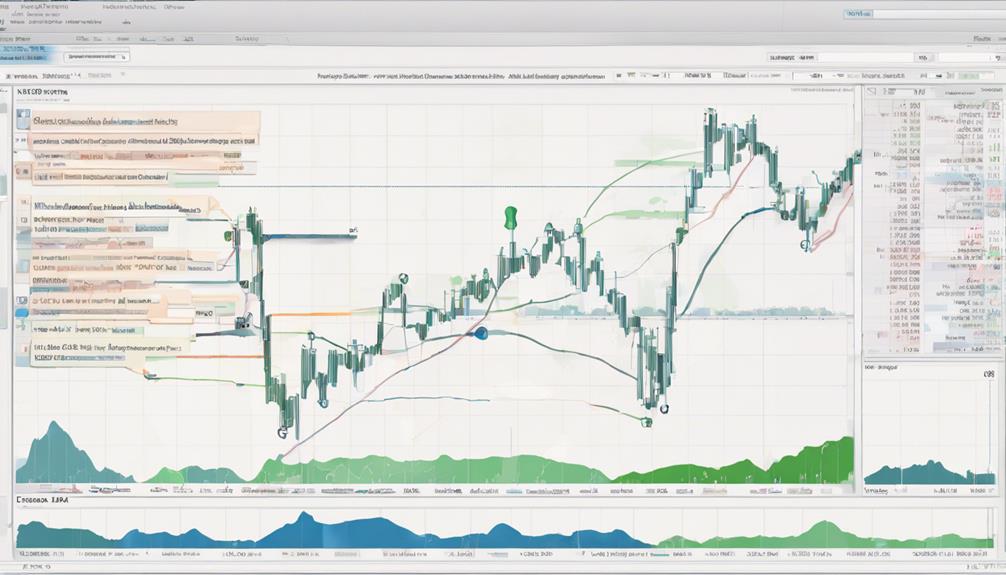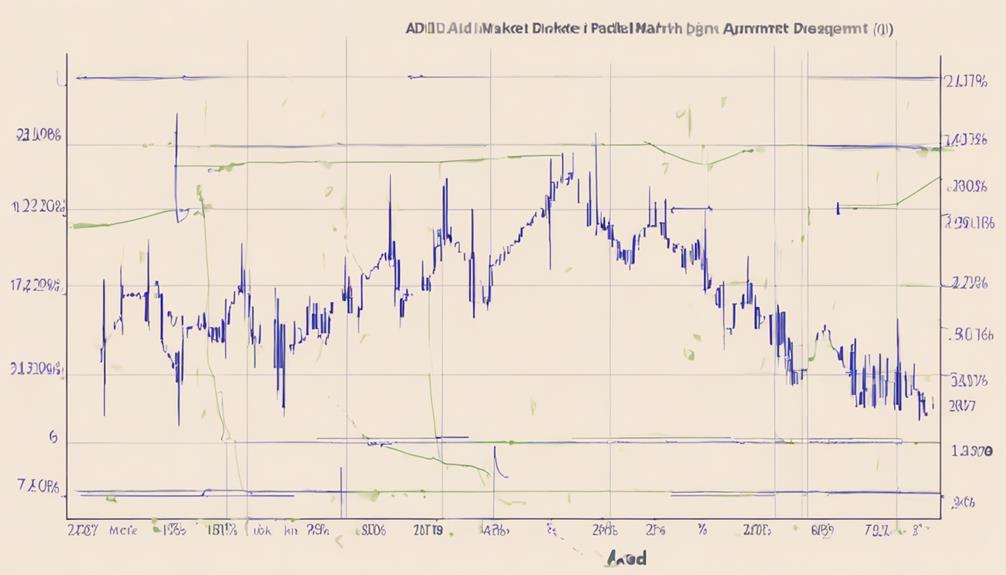You might think that predicting market movement is a complex web of uncertainties, but the Advance-Decline Line (ADL) offers a beacon of clarity amidst the chaos.
As you navigate the intricate world of market analysis, understanding the role that ADL plays in deciphering market trends could be the key to unlocking profitable trading strategies.
This seemingly simple indicator carries a weighty significance that goes beyond mere numbers, hinting at potential market shifts and guiding traders towards informed decisions.
So, how exactly does this unassuming line hold the power to sway market sentiment and influence trading outcomes?
Understanding the ADL Indicator
Understanding the ADL Indicator involves tracking the cumulative sum of daily advancing and declining stocks in an index to gain valuable insights into market breadth, trend health, and sentiment. The ADL, also known as the Advance-Decline Line, plays a pivotal role in confirming trends and detecting potential reversals in the market.
By calculating the net advances and considering the previous ADL value, you can observe if the ADL is rising or falling. A rising ADL signifies positive market breadth and bullish sentiment, indicating a healthy trend. Conversely, a falling ADL suggests negative market breadth and bearish sentiment, signaling a potential reversal in the trend.
Therefore, monitoring the ADL is essential for understanding market dynamics and making informed trading decisions.
Importance of ADL in Market Analysis

To comprehend the significance of the ADL indicator in market analysis, consider its role in measuring stock market breadth through the comparison of advancing and declining stocks. The ADL indicator is crucial in Financial market analysis as it provides insights into market breadth and strength.
By tracking the cumulative sum of advancing vs. declining stocks, traders can gauge the quality of a price trend. This helps in confirming market trends and identifying potential reversals. Furthermore, the ADL indicator can generate trading opportunities through crossovers and by revealing the sentiment behind index movements.
Integrating ADL with other trading tools enhances predictive modeling systems, allowing traders to make more informed decisions and grasp market conditions at deeper levels.
Interpreting ADL for Market Predictions

Examining the directional movement of the ADL indicator provides valuable insights for making informed market predictions based on trends and sentiment analysis. By analyzing ADL in conjunction with price charts, you can identify likely market trends and anticipate future movements.
ADL's ability to predict future downside price rotation and exit price levels is crucial for timing key turning points in the market. When integrated into predictive modeling results, ADL enhances the accuracy of market predictions by confirming or challenging existing trend directions.
Understanding how ADL reacts to market movements enables traders to adjust their strategies accordingly and stay ahead of potential shifts in market sentiment. This data-driven approach empowers you to make well-informed decisions when predicting market movements.
Utilizing ADL for Trading Strategies

Utilizing the ADL indicator effectively in trading strategies involves analyzing its direction, slope, and crossovers with price charts to confirm market trends and detect potential reversals. By comparing ADL to price movements, traders can enhance their strategies by gaining insights into market breadth.
The ADL indicator, updated daily to reflect real-time data, plays a crucial role in generating trading signals through its interactions with price charts. When ADL diverges from the price chart, it can indicate potential trend reversals, offering traders valuable information to make informed decisions.
Incorporating ADL into your trading approach provides a quantitative method to assess market dynamics and improve the accuracy of your trading strategies.
How Does ADL Help in Predicting Market Movement?
To grasp market breadth with ADL, understanding the accumulation/distribution line can help predict market movement. By analyzing the flow of money in and out of a stock, investors can gauge the strength of buying or selling pressure, providing important insights for making informed trading decisions.
How Can ADL Help in Predicting Market Movement?
Market trend analysis using ADL can help in predicting market movement by analyzing the volume and price movement of a security. By tracking the accumulation and distribution of a particular asset, ADL can provide insights into potential shifts in market direction, helping investors make more informed trading decisions.
ADL's Impact on Market Movement

ADL's impact on market movement becomes evident through its ability to gauge trend health and quality by measuring advancing and declining stocks. As a market breadth indicator, ADL plays a crucial role in predicting market movement by reflecting bullish or bearish sentiment.
An increasing ADL signifies positive market breadth and reinforces the bullish sentiment, while a decreasing ADL indicates negative breadth and supports bearish sentiment. Traders leverage ADL to confirm trends, identify potential reversals, and analyze market breadth alongside price movements.
Integrating ADL with other indicators enhances trading strategy efficiency and provides valuable insights into prevailing market conditions, enabling traders to make informed decisions based on a comprehensive assessment of market breadth and sentiment.
Frequently Asked Questions
What Is the ADL Trading Strategy?
In trading, the ADL strategy involves monitoring the Advance-Decline Line to confirm trends and reversals. By analyzing its direction and crossovers with price charts, you can identify entry and exit points, enhancing your trading efficiency.
What Is the Meaning of ADL in Share Market?
In the share market, ADL (Advance-Decline Line) reflects the cumulative sum of daily advancing versus declining stocks. It measures market breadth by comparing daily advancing and declining stocks, providing insights into sentiment and trend quality.
What Is the ADL Stock Indicator?
The ADL stock indicator is a tool that measures market breadth by comparing advancing and declining stocks. It calculates the cumulative sum of daily advancing vs. declining stocks to reflect trend health and quality.
How Do You Use Advance Decline Indicator?
To use the Advance Decline Line (ADL), monitor the cumulative difference between advancing and declining stocks daily. This helps gauge market breadth and potential sentiment shifts. By updating it regularly, you can analyze trends for informed trading decisions.
Conclusion
In conclusion, the ADL indicator serves as a valuable tool for predicting market movement by analyzing stock market breadth. By tracking the cumulative sum of advancing and declining stocks, traders can gauge trend health and quality, aiding in making informed trading decisions.
With its simplicity and effectiveness, the ADL indicator plays a crucial role in confirming market trends, detecting potential reversals, and generating trading signals. Stay ahead of the curve by incorporating ADL analysis into your market predictions. It's the bee's knees in market analysis.
